A project byGabriele Della Pepa + Andrea Elena Febres Medina + Caterina Ghio + Francesca Granzotto + Paola Rondi + Elena Stefani@Density Design, Final Synthesis Design Studio, January 2020
STARTING POINT
How does visual mis- and disinformation propagate?
During the 21st century, the number of software for editing images has rapidly increased. Time, cost and skill are not an obstacle anymore: everyone can easily learn how to fabricate convincing visual digital objects. Moreover, nowadays, the visual aspect is closely linked to information topic: in order to catch readers' attention, any newspaper article or Social Network post is usually accompanied by an image. For these reasons, perhaps even unknowingly, visual mis- and disinformation propagates across online news sources and Social Networks with growing frequency and sophistication. Thus, it is not unusual to find manipulated visual content online, used to deceive viewers, exploit beliefs or influence individuals’ decisions or actions. One specific example in which a decontextualized image has caused substantial damage on a social level is Trump’s Hurricane Dorian Map Controversy episode:
After drawing criticism for inaccurately warning over the weekend that Alabama could get hit by Hurricane Dorian — even after government meteorologists disputed that was the case —
President Donald Trump on Wednesday held up a map that appeared to have a line drawn on it in black making it seem as if he had been right all along. [...] The map he displayed had one addition
not on the one disseminated by the National Hurricane Center: what appeared to be a drawn-on semicircle appended to the "cone of uncertainty" showing the hurricane's potential projected impact —
extending the cone into Alabama. [...] It is against federal law to knowingly issue or publish any counterfeit weather forecasts that falsely represent an official forecast issued by government
entities like the National Weather Service and National Hurricane Center.
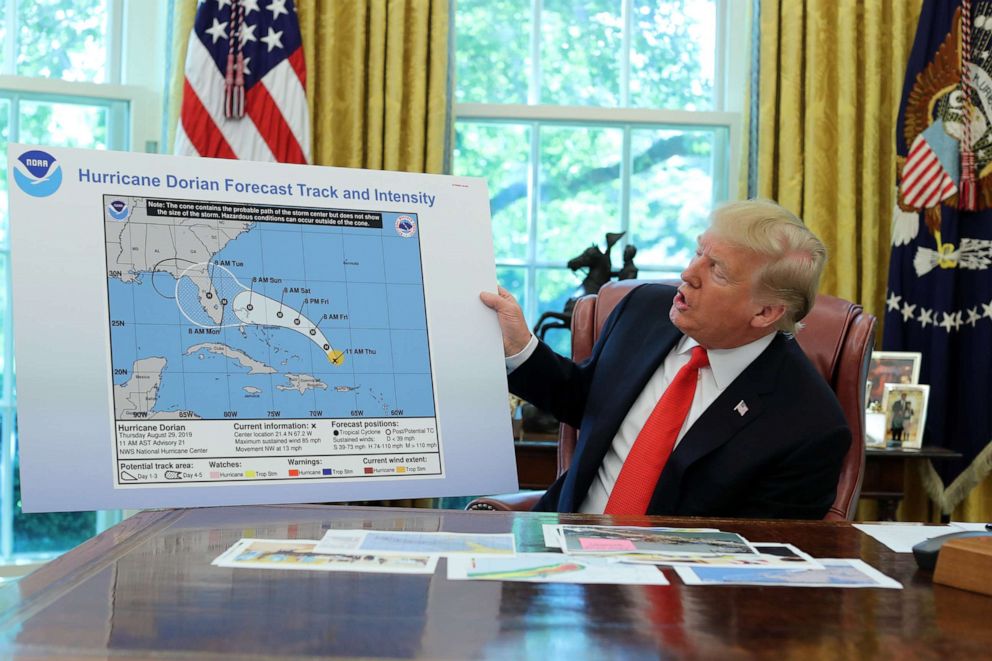 President Donald Trump, White House in Washington, Sept. 4, 2019.
@Jonathan Ernst/Reuters.
Read the entire article here.
President Donald Trump, White House in Washington, Sept. 4, 2019.
@Jonathan Ernst/Reuters.
Read the entire article here.
Manipulated images can distort and influence users’ opinion and memory. Quite often the distribution of fake images will far surpass the distribution of any correction or attempt to expose the forgery and the general public remains vulnerable to visual deception.
Shades of visual hoaxes
Despite the different intention with which manipulated content is produced, visual hoaxes are all harmful in the same way. Online users are often convinced that the phenomenon only concerns photoshopped images.
However, there are much more subtle shades of manipulation.The term fake does not describe the complexity of the different types of misinformation
— which is the inadvertent sharing of false information — and disinformation —
which is the deliberate creation and sharing of information known to be false. To understand the current visual information ecosystem, we need to break down three types of mis- and disinformation:
![]() Miscaptioned images — Real but misleading images with explanatory texts that falsely describe their context, origin or meaning.
Manipulated images — The primary elements are true, but some details have been added or deleted in order to change the meaning of the image.
Cropped images — Images that have been cropped to change their original meaning and their true context.
Miscaptioned images — Real but misleading images with explanatory texts that falsely describe their context, origin or meaning.
Manipulated images — The primary elements are true, but some details have been added or deleted in order to change the meaning of the image.
Cropped images — Images that have been cropped to change their original meaning and their true context.
MAIN TOPICS
How do we perceive online visual information?
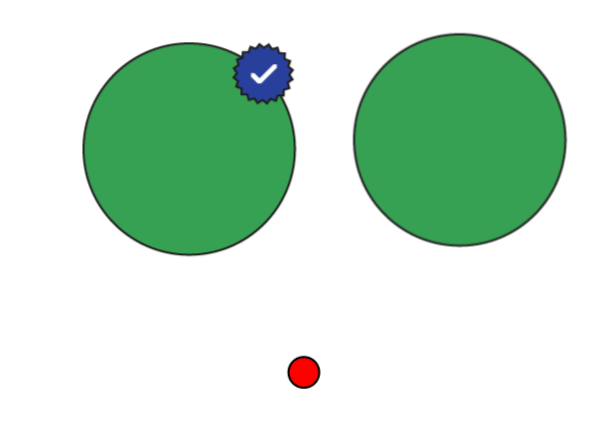 Online information credibility is an aspect of information that depends on the user's perception. In order to save time and effort,
online we process facts relying on social clues: reputation, endorsements, consistency, expectancy violation, share from like-minded others and number of likes are
all features that affect the way we judge information.
Online information credibility is an aspect of information that depends on the user's perception. In order to save time and effort,
online we process facts relying on social clues: reputation, endorsements, consistency, expectancy violation, share from like-minded others and number of likes are
all features that affect the way we judge information.
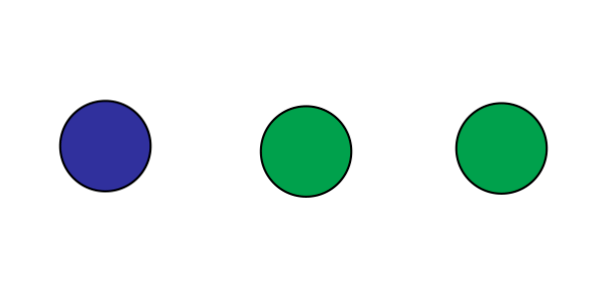 Source trustworthiness and where the information is published are important factors that can influence online information credibility: users tend to transfer the reputation of the source
to the content itself and perceive news organizations as having more expertise than singular individuals sharing information on Social Network.
In addition, we tend to perceive information as credible if others think so: visual information from more credible intermediaries will be perceived as
more credible than those from less credible intermediaries.
Source trustworthiness and where the information is published are important factors that can influence online information credibility: users tend to transfer the reputation of the source
to the content itself and perceive news organizations as having more expertise than singular individuals sharing information on Social Network.
In addition, we tend to perceive information as credible if others think so: visual information from more credible intermediaries will be perceived as
more credible than those from less credible intermediaries.
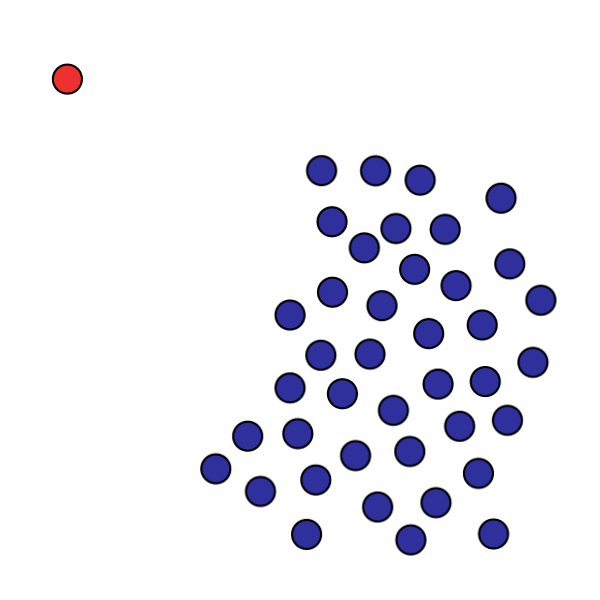 Fear of Missing Out and Bandwagon effect are led by a compulsive concern about loss of opportunity for social interaction and can trigger the thought:
“If other people like this, then I should too”. For these reasons, time becomes one of the most important factors that influences online information credibility: it pushes the user to
judge and share information while not really paying attention to what the content is about.
Fear of Missing Out and Bandwagon effect are led by a compulsive concern about loss of opportunity for social interaction and can trigger the thought:
“If other people like this, then I should too”. For these reasons, time becomes one of the most important factors that influences online information credibility: it pushes the user to
judge and share information while not really paying attention to what the content is about.
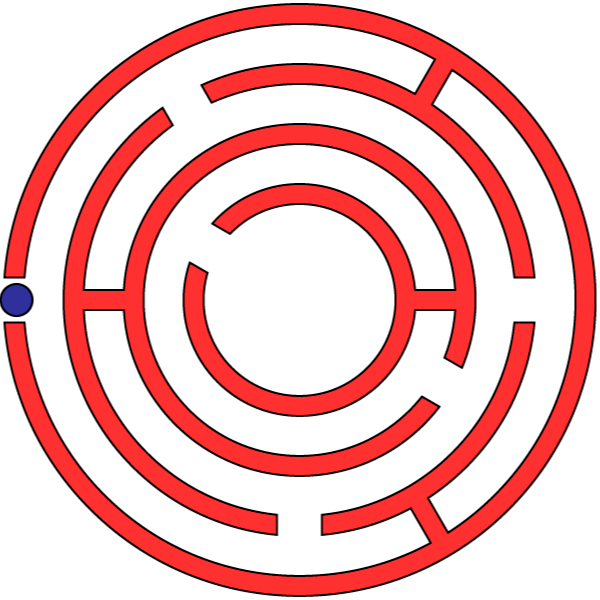 Digital Media Literacy, described as familiarity and expertise with various online platforms, enables users to correctly identify digital features such as source and intermediary in order to make credibility assessments.
In the context of visual information, experiences and proficiency related to photography or digital imaging are also useful.
Digital Media Literacy, described as familiarity and expertise with various online platforms, enables users to correctly identify digital features such as source and intermediary in order to make credibility assessments.
In the context of visual information, experiences and proficiency related to photography or digital imaging are also useful.
 Issue attitude and confirmation bias have a significant effect: people are more likely to accept a visual content as real if it aligns with their prior beliefs,
especially if it is related to politics or current events subjects.
Issue attitude and confirmation bias have a significant effect: people are more likely to accept a visual content as real if it aligns with their prior beliefs,
especially if it is related to politics or current events subjects.
WHAT'S THE GOAL
How to mitigate the potential harm of visual hoaxes
The main purpose of doublecheck quiz is to show online users how difficult it is to recognize whether an image is reliable or not. In addition, this project shows users that every image encountered must be analysed both in its content and in its context. By not paying such attention online, the user could become himself a vehicle for the spread of disinformation and misinformation. We all play a crucial part in the visual information ecosystem: whenever we passively accept unverified information — for example by sharing a post, image or video without confirming them — we are all potentially adding noise and confusion to this overcrowded and polluted reality. We must take responsibility for independently checking what we see online. Lastly, doublecheck suggests that to mitigate the potential harm caused by disinformation online, the best strategy is investing in educational efforts to increase users’ digital media literacy. Gamification — the process of using game-style mechanics to encourage people’s participation and engagement in non-game contexts — is the method used here to convey this message: by taking the quiz, users can both test their skills and actively understand the complexity of visual misinformation topic.
STARTER PACK
Useful tools to deal with visual hoaxes
Data
Online visual mis- and disinformation is a phenomenon that has developed in parallel with the birth and diffusion of Social Networks worldwide. Nowadays, both young people and adults often
use these channels as their only source of news.
Mainly for this reason, dis- and misinformation spreads readily in this settings.
During the first phase of the design process, we explored which platforms are the most used in which region of the World.
If you want to learn more about the most influential Social Networks around the World, visit our site:
Social Networks by Cultural Areas
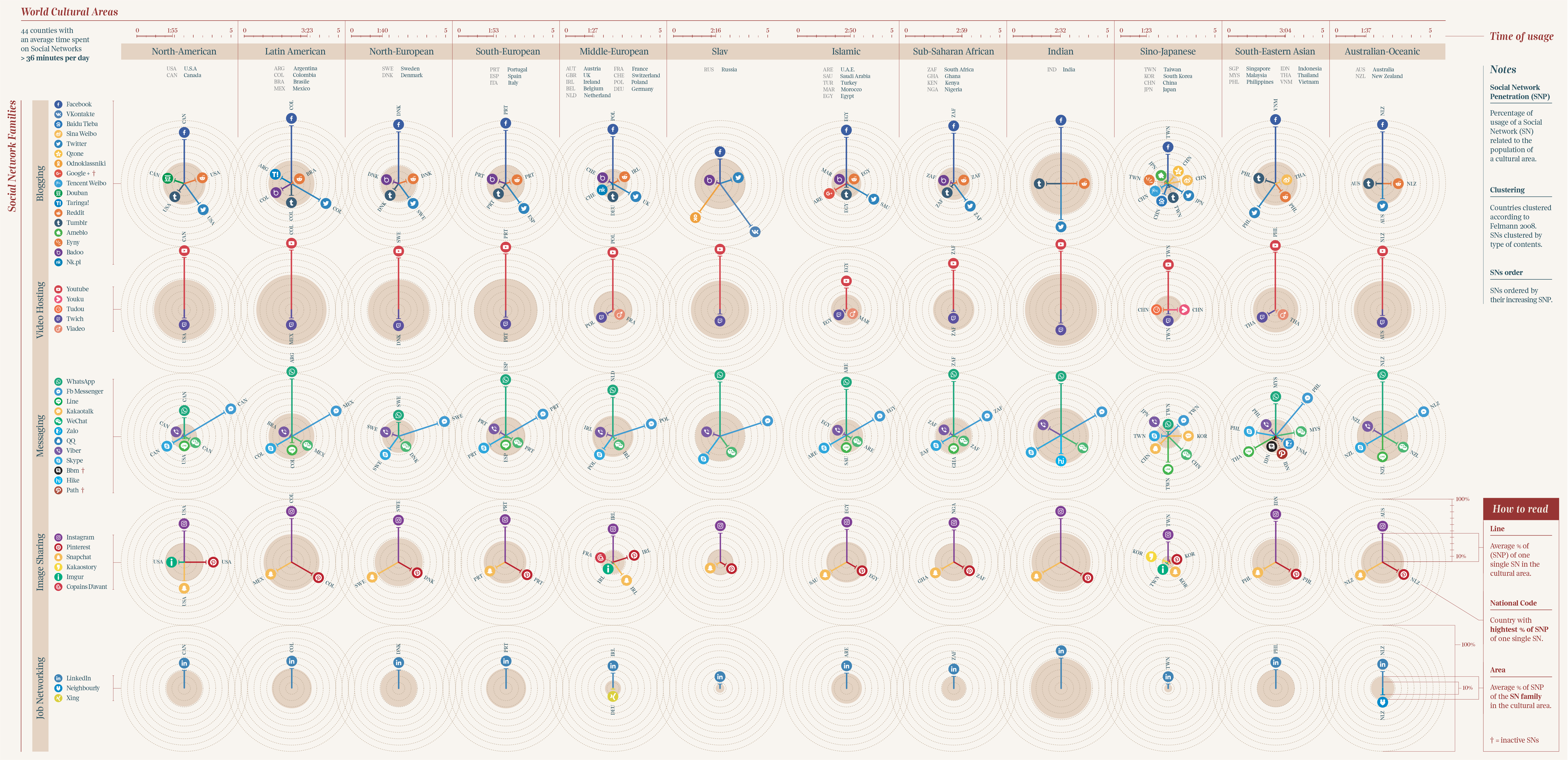 Confirmation bias is more pronounced for visual information related to politics and current events.
In fact, when it comes to high media resonance events which are supposed to be familiar to the public,
visual media disinformation is even more widespread and varied.
To get a better understanding of this phenomenon, check out our previews project:
I see it, therefore I believe it
Confirmation bias is more pronounced for visual information related to politics and current events.
In fact, when it comes to high media resonance events which are supposed to be familiar to the public,
visual media disinformation is even more widespread and varied.
To get a better understanding of this phenomenon, check out our previews project:
I see it, therefore I believe it
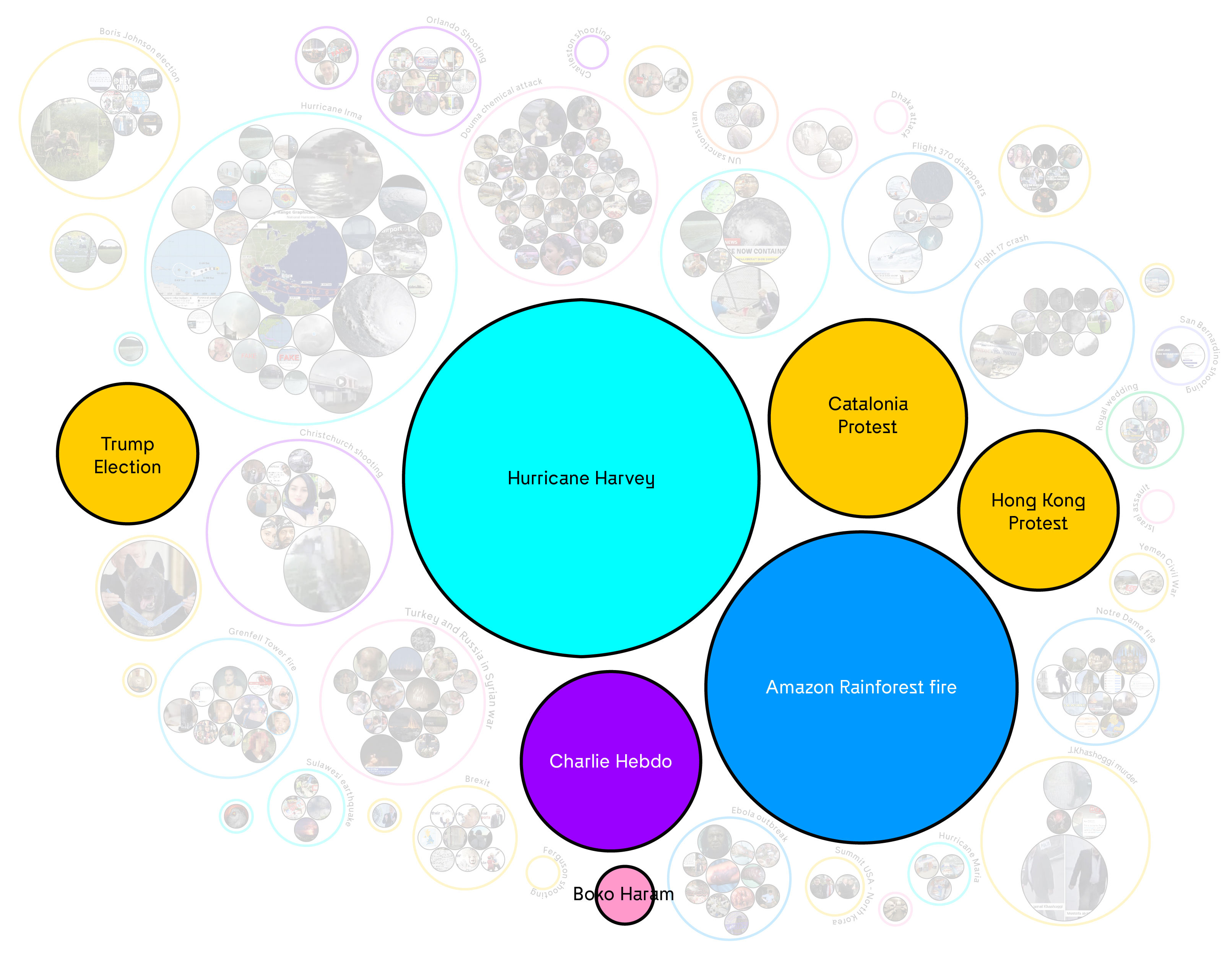 Which and how many times are the fake images related to relevant events of the last 6 years debunked on Google.com?
Which and how many times are the fake images related to relevant events of the last 6 years debunked on Google.com?
FAQs and Tips
— Which is the easiest tool to verify the original source of an image? The easiest tool to trace back to the source an image uploaded on the internet is Reverse Image Search. Thanks to it, you can use a picture to find related or similar images, the websites that contain them and other sizes of the original one. Paying attention to resolution, you can open all the possible links and search for copyright or claimed original source!
— Is there a site I can check to find other visual mis- and disinformation examples? Yes, the site that was used the most for this project is Snopes.com, an independent publication and a fact-checking resource.
— Where can I find out about the different types of visual mis- and disinformation? If you want to learn more about this topic you can read "Fake news. It’s complicated." by Claire Wardle. This article is a breakdown of the types of fake content, content creators' motivations and how it's being disseminated, in order to understand the misinformation ecosystem.
— Have there been studies about perception and ability to recognize visual mis- and disinformation? Yes, in particular the paper written by Cuihua Shen, Mona Kasra, Wenjing Pan Grace A. Bassett, Yining Malloch, James F O’Brien:"Fake images: The effects of source, intermediary, and digital media literacy on contextual assessment of image credibility online".
— Where can I find the sources of all the images used in this project? This is the dataset you can download to get all the links of the articles from which we extracted the images.


Project by Della Pepa Gabriele Febres Medina Andrea Ghio Caterina Granzotto Francesca Rondi Paola Stefani Elena
Faculty Michele Mauri Ángeles Briones Gabriele Colombo Simone Vantini Salvatore Zingale
Teaching Assistants Andrea Benedetti Lea Mara Fabiano Alessandra Facchin Beatrice Gobbo Tommaso Elli Jacopo Di Iorio Anna Riboldi